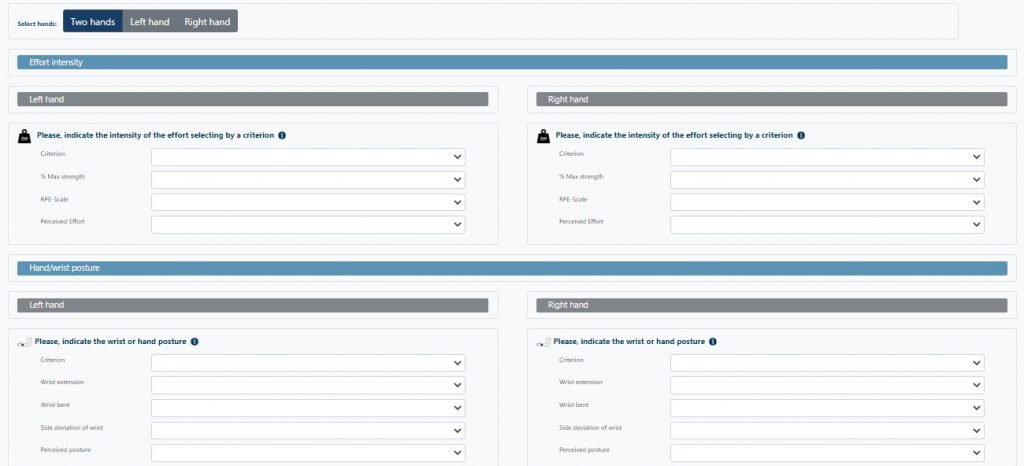Originally proposed by Moore and Garg from the Department of Preventive Medicine of the Medical College of Wisconsin, United States.
It is based on identifying tasks that expose workers to a risk of developing disorders in the upper distal limbs (elbow, forearm, wrist and hand) due to repetitive motions.
Six variables are measured, which once evaluated, give rise to six multiplying factors of an equation, which result in the Strain Index (risk of disorders appearing in the upper limbs).
The variables to be measured are:
- Intensity of exertion
- Duration of exertion per work cycle
- Efforts made in a minute’s work
- Wrist deviation respect to neutral position
- Speed of work
- Duration of task per day
The variables that measure the physical exertion are the intensity of exertion and the hand/wrist posture, the other variables measure the psychological load by means of the duration of the task and the rest time.








